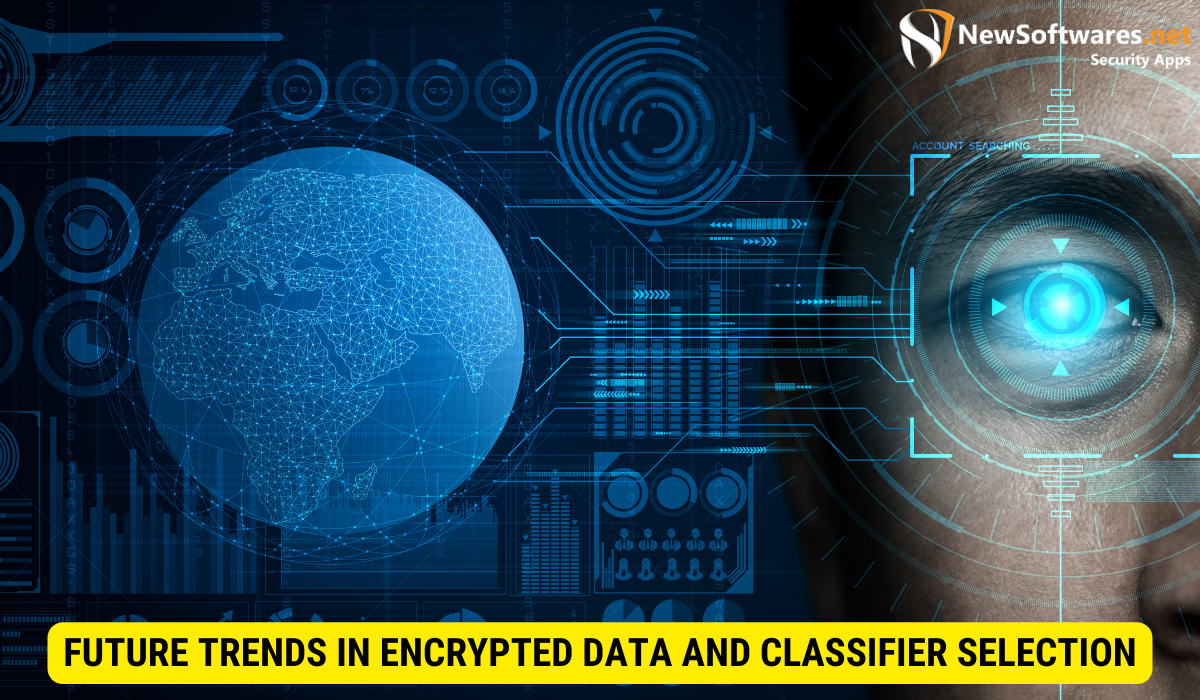Classifier selection plays a crucial role in maintaining data privacy by enabling accurate data analysis while safeguarding individual privacy.
Data privacy is a critical concern in our increasingly connected and digital world. As more and more personal and sensitive information is being collected and analyzed, it becomes imperative to ensure the privacy and security of this data. One approach to protecting data privacy is through the use of encryption techniques. However, the use of encryption can pose challenges when it comes to data analysis and classification. Together, we will explore the intersection of classifier selection and encryption, the techniques for working with encrypted data, the privacy concerns in classifier selection, and the future trends in encrypted data and classifier selection.
Understanding Classifier Selection

Classifier selection plays a crucial role in data privacy by enabling accurate and efficient data analysis. Classifiers are algorithms that are trained to classify data into different categories based on a set of features. By selecting the right classifier, organizations can effectively analyze data while safeguarding individual privacy.
When it comes to classifier selection, there are several key concepts to consider. One of the key considerations is the trade-off between accuracy and privacy. While more accurate classifiers may provide better insights, they may also pose greater privacy risks. Organizations must carefully weigh the benefits of accuracy against the potential privacy concerns.
Another important concept in classifier selection is the notion of model interpretability. Model interpretability has the ability to understand and explain the decisions made by a classifier. Interpretable models can help ensure transparency and accountability in data analysis. By selecting classifiers that are easily interpretable, organizations can gain a deep understanding of the factors that contribute to their data analysis results.
Furthermore, the choice of classifier can also impact the scalability and efficiency of data analysis. Some classifiers may be more computationally intensive, requiring significant computational resources to process large datasets. On the other hand, certain classifiers may be specifically designed to handle big data, allowing for faster and more efficient analysis. Organizations must consider their specific data analysis needs and infrastructure capabilities when selecting a classifier.
In addition to accuracy, privacy, interpretability, and scalability, there are other factors that organizations should take into account when choosing a classifier. These factors include the complexity of the classifier, the availability of training data, and the robustness of the classifier to handle noise and outliers in the data. By carefully evaluating these factors, organizations can make informed decisions about which classifier is best suited for their data analysis tasks.
It is worth noting that classifier selection is not a one-size-fits-all approach. Different classifiers have different strengths and weaknesses, and the finest choice may vary depending on the specific data and analysis goals. Organizations should consider conducting experiments and evaluations to compare the performance of different classifiers on their datasets before making a final selection.
In conclusion, classifier selection plays a crucial role in data privacy by enabling accurate and efficient data analysis. By considering factors such as accuracy, privacy, interpretability, scalability, complexity, training data availability, and robustness, organizations can make informed decisions about which classifier to use. It is important to remember that classifier selection is a dynamic process, and organizations should continuously evaluate and update their choice as new data and analysis requirements arise.
The Intersection of Encryption and Classifier Selection
The Importance of Encryption in Data Privacy
Encryption is a technique used to transform data into a coded form that can only be decrypted with a specific key. It is a fundamental tool for ensuring data privacy and security. By encrypting data, organizations can shield sensitive information from unauthorized access and maintain confidentiality.
One of the key benefits of encryption is its ability to safeguard data during transmission. When data is encrypted, it is transformed into an incomprehensible format, making it virtually impossible for hackers or unauthorized individuals to intercept and decipher the information. This is particularly significant in today’s digital landscape, where cyber threats are becoming increasingly sophisticated.
Moreover, encryption plays a vital role in compliance with data protection regulations. Many countries have implemented stringent laws and regulations to protect individuals’ personal information. Encryption is often a requirement for organizations handling sensitive data, as it ensures that personal information remains secure and inaccessible to unauthorized parties.
How Encryption Enhances Classifier Selection
While encryption is essential for data security, it can present challenges when it comes to data analysis and classification. However, advancements in cryptography have enabled the development of techniques for working with encrypted data. These techniques, often referred to as privacy-preserving data mining, allow organizations to perform analysis on encrypted data without compromising privacy.
Privacy-preserving data mining techniques employ various cryptographic protocols to enable secure computation on encrypted data. These protocols ensure that sensitive information remains encrypted throughout the analysis process, preventing any unauthorized access to the underlying data. By leveraging these techniques, organizations can confidently apply classification algorithms to encrypted data, extracting valuable insights while preserving privacy.
One popular approach in privacy-preserving data mining is homomorphic encryption. Homomorphic encryption allows computations to be performed on encrypted data, without the need for decryption. This means that organizations can apply classification algorithms to encrypted data without ever exposing the raw information, ensuring that privacy is maintained at all times.
Another technique commonly used in privacy-preserving data mining is secure multiparty computation (SMC). SMC enables multiple parties to equally compute a function on their respective encrypted inputs without revealing any sensitive information. This approach is particularly useful when multiple organizations need to collaborate on data analysis while preserving the privacy of their datasets.
By combining encryption with classifier selection, organizations can benefit from both data privacy and accurate analysis. The use of privacy-preserving data mining techniques ensures that sensitive information remains encrypted and secure, while still allowing organizations to gain valuable insights from the data. This intersection of encryption and classifier selection opens up new possibilities for data-driven decision-making, without compromising privacy.
Techniques for Working with Encrypted Data
Challenges in Handling Encrypted Data
Handling encrypted data presents unique challenges compared to working with unencrypted data. One of the main challenges is the inability to directly access and manipulate the data in its original form. Instead, computations need to be performed on the encrypted data, which can be computationally intensive and require specialized algorithms.
Effective Strategies for Encrypted Data Analysis
Despite the challenges, there are effective strategies to analyze encrypted data. One approach is to use homomorphic encryption, which allows computations to be performed directly on encrypted data without the need for decryption. Another strategy is secure multiparty computation, which enables multiple parties to collaborate on analyzing encrypted data without revealing their individual inputs.
Privacy Concerns in Classifier Selection
Addressing Privacy Issues in Data Analysis
While working with encrypted data can enhance privacy, there are still privacy concerns in classifier selection. The use of certain classifiers may inadvertently reveal sensitive information about individuals. It is crucial to carefully consider the privacy implications of different classifiers and their potential impact on individual privacy.
The Impact of Privacy Regulations on Classifier Selection
Privacy regulations, for instance the General Data Protection Regulation (GDPR), have a significant impact on classifier selection. These regulations aim to shield individual privacy rights and impose obligations on organizations that collect and analyze data. Organizations need to ensure that their classifier selection processes comply with privacy regulations and respect individual privacy preferences.
Future Trends in Encrypted Data and Classifier Selection

Predicted Developments in Data Encryption
As technology continues to progress, we can expect additional developments in data encryption techniques. New encryption algorithms and protocols are likely to be developed to address the challenges of analyzing encrypted data. Additionally, advancements in hardware, such as the development of secure enclaves and trusted execution environments, may enable more efficient and secure computations on encrypted data.
The Future of Classifier Selection in Data Privacy
The future of classifier selection in data privacy is closely intertwined with advancements in privacy-preserving data analysis techniques. We can expect the emergence of more complicated classifiers that can operate on encrypted data while ensuring privacy. Additionally, there may be increased emphasis on interpretable models to enable transparency and accountability in data analysis.
Key Takeaways
- Classifier selection plays a crucial role in maintaining data privacy by enabling accurate data analysis while safeguarding individual privacy.
- Encryption is a fundamental tool for ensuring data privacy and security, but it can pose challenges when it comes to data analysis and classification.
- Techniques for working with encrypted data, such as homomorphic encryption and secure multiparty computation, enable analysis without compromising privacy.
- Privacy concerns in classifier selection require careful consideration of the privacy implications of different classifiers and compliance with privacy regulations.
- The future of classifier selection in data privacy will involve advancements in encryption techniques and the emergence of more sophisticated, privacy-preserving classifiers.
FAQs
How does classifier selection impact data privacy?
Classifier selection impacts data privacy by determining the accuracy and privacy risks associated with data analysis.
What are the challenges in working with encrypted data?
Working with encrypted data presents challenges such as the inability to directly access and manipulate the data in its original form.
Can encrypted data be analyzed without compromising privacy?
Yes, techniques such as homomorphic encryption and secure multiparty computation enable analysis on encrypted data without compromising privacy.
How do privacy regulations impact classifier selection?
Privacy regulations impose obligations on organizations to protect individual privacy rights, which affects the selection of classifiers.
What does the future hold for encrypted data and classifier selection?
The future involves advancements in encryption techniques and the development of more sophisticated, privacy-preserving classifiers.
Conclusion
Data privacy is of greatest importance in today’s digital landscape. Classifier selection plays a vital role in maintaining data privacy by enabling accurate and efficient data analysis while safeguarding individual privacy. Encryption is a fundamental tool for data privacy, but it can pose challenges in conditions of data analysis and classification. However, advancements in encryption techniques and privacy-preserving data analysis can help overcome these challenges. It is essential for organizations to cautiously consider the privacy implications of different classifiers and comply with privacy regulations. The future of classifier selection in data privacy will involve further advancements in encryption techniques and the emergence of more sophisticated, privacy-preserving classifiers.
